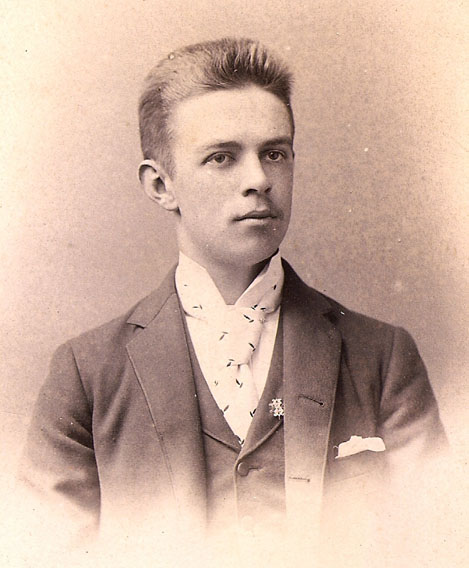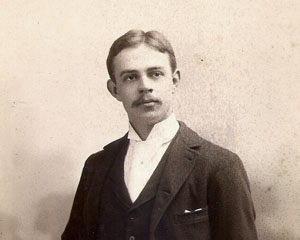
Heber Cady Tilden
Red Cross Worker - Accidentally killed by
Citizen Patrol, San Francisco April 22, 1906
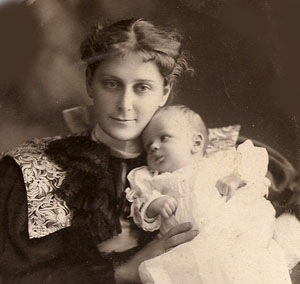
Heber's wife Alice Voorman Tilden
with
their son
Heber Voorman Tilden
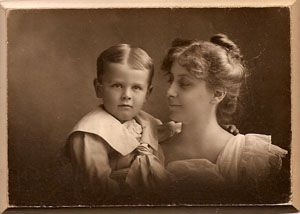
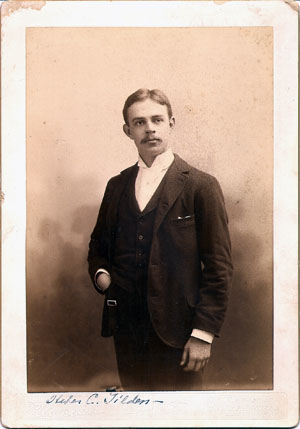
Heber C. Tilden
November 26, 1891
Heber Cady Tilden 1884Heber Cady Tilden
1906 Volunteer Red Cross Worker
Accidentally Shot and Killed by Citizens Patrol
April 22, 1906After the catastrophic April 18, 1906 earthquake, one of the first citizens to volunteer his services to the Red Cross Society was Mr. Heber Tilden, a prominent merchant and a man of great popularity because of his kindly disposition. He worked night and day with his large automobile, carrying invalids to places of shelter from the storm then raging.
On the evening of April 22 he tore himself away from this work for the purpose of visiting his own family in the neighborhood of San Mateo, a few miles from San Francisco. He used his automobile for this purpose, and was accompanied by Acting Lieutenant Seamans of the Signal Corps.
After leaving his family he and Seamans returned to San Francisco, reaching Twenty- fourth and Guerrero streets about midnight. A large Red Cross flag was flying from his car at the time, and Tilden was acting as his own chauffeur. At this point some men in civilian clothing called "halt," but as the machine drew nearer and they observed the flag it was permitted to pass.
During and after the fire, several men organized what was known as a "Citizens' patrol" of watchmen, and they were armed with rifles and pistols. On May 26, the Mayor ordered the patrol to disband. At Twenty-second street three other men called out "halt," but Tilden, believing that they would see his flag as he drew nearer, paid no attention to the command and passed on. Someone on the corner then began firing a revolver and Seamans responded, emptying his revolver. 'While Seamans was firing, Tilden fell forward, mortally wounded, and Seamans was also wounded. The machine was stopped and the men on the corner hurried up to it and then learned the result of the shooting.
Three of these men were arrested and charged with murder. Their names were Edward Boynton, Vance Malcolm and G. W. Simmons. It was shown
that they were members of the so-called "Citizens' Police," an organization formed for the purpose of assisting the police, but having no authority as peace officers. Their preliminary examination was held before Judge Shortall, who on May 24 held them to answer before the Superior Court.Clarence Dobie, Master of Oriental Lodge, No.144, Free and Accepted Masons having heard of the murder of Brother Tilden organized a group of the brethren and liberated the body of Brother Tilden from the temporary city morgue and took the body to the South San Francisco Masonic Lodge,(now the Opera House on 3rd Street.) Brother Tilden's body had been scheduled to be burned along with the other bodies of those who were killed in the earthquake and only the quick action of Clarence Dobie saved his body from the flames. With the Assistance of the Worshipful Master McDonald of Francis Drake Lodge, which met at the South San Francisco Masonic Temple, the members of Oriental Lodge and several members of Francis Drake Lodge performed a Masonic Funeral Service for Brother Tilden. He was buried at Cypress Lawn Cemetery with full Masonic Honors on Sunday, April 29th, 1906. Brother Tilden left a wife and three sons. His grand children and their families still reside in San Francisco.
On September 20, the trials of Boynton and Simmons began before Superior Judge Cook. Mayor E. E. Schmitz testified that he issued an order on April 18 for all guardians of the peace to kill thieves or persons committing any serious crime.
Boynton testified that he had been detailed at Twenty-second and Guerrero streets, and that he had received orders to halt all persons and ascertain the nature of their business. He also stated that he was under the impression that martial law had been declared. He testified further as follows:
"At about midnight two men came along on foot, and upon halting them I learned that they were fellow guards named Malcolm and Simmons. At that instant I observed an automobile coming down Guerrero street at a high rate of speed, and I also noticed that the driver ignored the that the machine had been stolen I cried 'halt,' but as the chauffeur only increased his speed, I fired a shot in the air as they passed. A man in the machine began firing. so in self-defense I fired directly toward the machine, emptying my revolver, Simmons also fired one shot from his rifle."
Judge Cook's instructions to the jury were in part as follows: This is in many respects an extraordinary case, arising under extraordinary conditions.
I charge you as a matter of law that at the time in question, martial law did not prevail. The State law was supreme and mere proclamations could not make laws.
No soldier or police had any right to stop citizens without legal cause, and ignorance of the law is no excuse.
But the Penal Code expressly excepts from among persons capable of committing crime, those who commit an act or omission under a mistake of fact that disproves criminal intent.
It is a matter of history that the entire community believed that martial law prevailed during the great fire.
Therefore, if the defendants honestly believed and the circumstances were such as to lead them to believe that they were acting under martial law, and the evidence proves that that mistake removes any criminal intent, then the defendants were incapable of committing this alleged crime.
The question to be decided is: Did the defendants honestly believe at the time of the firing of the shots that the automobile was stolen and that they were preventing the further commission of a felony? If so they were justified under the law.
After a few moments' deliberation the jury returned a verdict of not guilty, and on motion of the District Attorney, the charge against Malcolm was also dismissed.
--------------------------------
James S. Dierke, Past Master
Phoenix Lodge, No. 144 F & A.M.
Lodge Historian
From the article: Plaque Commemoration for Heber C. Tilden, Killed April 22, 1906 by Citizens' Patrol
In commemoration of the 100th anniversary of the untimely death of Brother Heber C. Tilden, Phoenix Lodge No. 144, F. & A.M. of California is placing a plaque at the corner of 22nd and Guerrero Streets in honor of this unsung hero who worked unselfishly for the citizens of San Francisco during the great disaster of 1906 as its first mobile Red Cross Worker. Brother Tilden was shot and killed by a Citizens' Patrol on 22nd & Guerrero Streets on April 22, 1906, while in the service of the American Red Cross.
In the year 2000, Oriental Lodge No. 144, Free and Accepted Masons changed its name to Phoenix Lodge No.144. Its membership includes many prominent men who worked and lived in San Francisco during the past 140 years.
